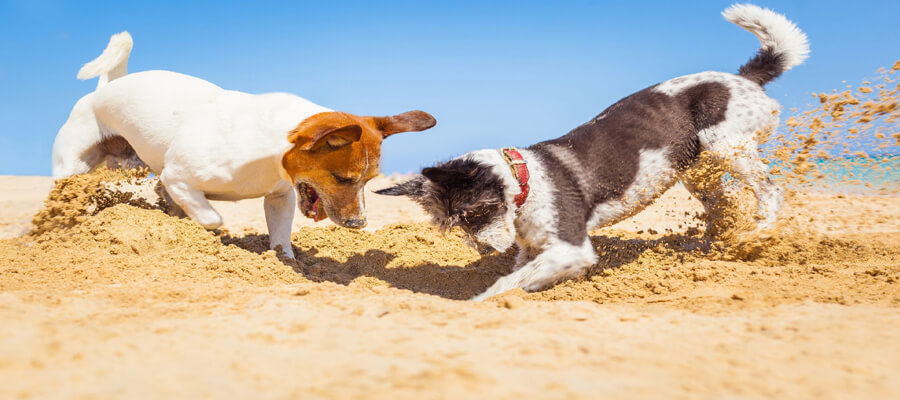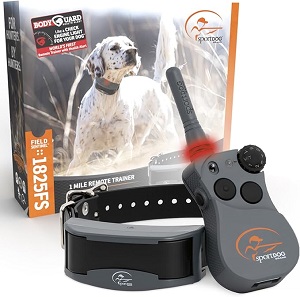
Why Do Dogs Dig The Reason Behind the Behavior
Why Do Dogs Dig Understanding the Reasons Behind Your Dog's Behavior
Introduction
Digging is a common and instinctual behavior in dogs, but for many pet owners, it can be a source of frustration—especially when it results in torn-up lawns, garden beds, or even furniture. While it may seem like a puzzling or destructive habit, digging serves several purposes for dogs, often rooted in their natural instincts or environmental factors. Understanding why your dog digs can help you manage the behavior in a way that meets their needs while protecting your yard and home. In this article, we’ll explore the reasons behind your dog’s digging habit and how you can address it.
1. Instinctual Behavior from Ancestral Roots
What It Means:
Digging is an ancient behavior passed down from dogs' wild ancestors. In the wild, wolves and other canines dig for various reasons—such as creating a den for protection or comfort, hiding food, or finding cooler ground during hot weather. This deeply ingrained behavior is hardwired into your dog’s DNA, and even domesticated dogs may feel the urge to dig, especially in certain conditions.
How to Respond:
If your dog’s digging is driven by instinct, it’s important to recognize that this behavior is natural, rather than destructive. Instead of punishing them, try redirecting the behavior to a designated area where they can dig safely, such as a sandbox or a specific part of your yard. Providing an appropriate outlet for their digging instincts can help prevent unwanted holes in other areas.
2. Seeking Comfort or Shelter
Essentials for Your Newly Adopted Pet
Welcoming a shelter pet into your life is a beautiful journey. Here are some handpicked items to help your new friend feel safe, loved, and right at home:
What It Means:
Dogs often dig to create a comfortable spot to rest, especially if the ground is too hot or cold. By digging, dogs can expose cooler earth during warm weather or create a cozy, sheltered space in colder climates. This behavior is especially common in outdoor dogs or dogs with access to a backyard.
How to Respond:
If your dog is digging to find a comfortable place to rest, consider providing them with a shaded area or a cooling mat during hot weather. Similarly, during cold weather, offer a warm bed or shelter where they can feel safe and secure. Ensuring your dog has a comfortable resting spot can reduce the need for them to dig for temperature regulation.
3. Boredom or Excess Energy
What It Means:
Digging can also be a sign that your dog is bored or has excess energy that needs to be expended. Dogs, especially active or working breeds, need plenty of physical and mental stimulation to stay happy and balanced. Without enough exercise, playtime, or enrichment, dogs may turn to digging as a way to entertain themselves and release pent-up energy.
How to Respond:
Make sure your dog is getting enough exercise and mental stimulation throughout the day. Regular walks, play sessions, and puzzle toys can help keep your dog occupied and prevent boredom-induced digging. If your dog has a lot of energy, consider activities like agility training, fetch, or even hiking to tire them out in a productive way.
4. Anxiety or Stress
What It Means:
Some dogs dig as a way to cope with anxiety or stress. This behavior can be a sign that your dog is feeling overwhelmed or insecure. Separation anxiety, changes in the environment, or even loud noises like thunderstorms can trigger anxious digging as your dog attempts to create a safe space or release nervous energy.
How to Respond:
If your dog is digging out of anxiety, it’s important to address the underlying cause of their stress. Try to identify the source of their anxiety and work on desensitization or counterconditioning techniques. For example, if your dog is afraid of loud noises, you can gradually expose them to those sounds in a controlled manner while providing positive reinforcement. In some cases, using calming products like pheromone diffusers or anxiety wraps can also help soothe anxious dogs.
5. Burying Food or Treasures
What It Means:
Dogs have an innate desire to bury items, whether it’s food, toys, or other “treasures.” This behavior comes from their wild ancestors, who would bury excess food to save it for later. While your dog likely doesn’t need to hide their food for survival, they may still follow this instinct by digging holes to stash treats or favorite toys.
How to Respond:
If your dog is digging to bury food or toys, try offering them puzzle feeders or treat-dispensing toys that provide mental stimulation while allowing them to engage in foraging-like behavior. If they continue to dig to hide items, you can create a designated digging area where they can safely bury their treasures without damaging your yard.
6. Escape Attempts
What It Means:
Some dogs dig to escape from fenced yards or confined areas, either out of curiosity or in an attempt to reach something beyond their enclosure. Escape digging is common in dogs that feel confined, are not properly socialized, or are drawn to stimuli outside the yard, such as other animals, people, or loud noises.
How to Respond:
If your dog is digging under fences or gates to escape, it’s crucial to address the issue for their safety. Make sure your yard is secure by burying chicken wire or placing large rocks along the fence line to prevent digging. Additionally, ensure that your dog has enough stimulation and isn’t left alone for long periods, as boredom and loneliness can contribute to escape behavior.
7. Hunting or Chasing Prey
What It Means:
Dogs with strong prey drives may dig in pursuit of small animals, such as moles, squirrels, or rabbits. If your dog sees or hears something moving underground, they may start digging frantically to reach it. Terriers, hounds, and other hunting breeds are especially prone to this behavior, as they have been bred to hunt small game.
How to Respond:
If your dog is digging to chase after prey, consider addressing the root cause by discouraging small animals from entering your yard. You can use humane repellents or secure your yard to prevent wildlife from triggering your dog’s hunting instincts. Additionally, providing your dog with mentally stimulating activities, like scent work or interactive play, can help satisfy their hunting drive in a more controlled environment.
8. Pregnancy or “Nesting” Behavior in Female Dogs
What It Means:
Female dogs may start digging as part of nesting behavior, especially if they are pregnant or experiencing a false pregnancy. This instinctual behavior mimics how wild dogs would prepare a safe and comfortable space to give birth and care for their pups.
How to Respond:
If your female dog is pregnant or going through a false pregnancy, provide her with a safe, comfortable area where she can nest without digging up your yard. If the digging becomes excessive or concerning, consult with your veterinarian to ensure that your dog’s health and well-being are properly addressed.
9. Curiosity About Their Environment
What It Means:
Sometimes, dogs dig simply because they’re curious about what’s beneath the surface. This can happen if they smell something interesting, feel unusual textures, or want to investigate new scents. Digging can be a way for dogs to explore their environment using their powerful sense of smell and natural curiosity.
How to Respond:
If your dog is digging out of curiosity, you can redirect their behavior by offering alternative ways for them to explore their environment, such as providing them with puzzle toys, scent games, or supervised digging areas. Encouraging safe exploration will help satisfy your dog’s curiosity without allowing them to dig up your yard.
10. Medical Issues
What It Means:
In rare cases, excessive digging can be a sign of underlying medical issues, such as skin irritation, parasites, or discomfort. Dogs that are experiencing itching, pain, or other physical symptoms may dig as a way to relieve their discomfort.
How to Respond:
If your dog’s digging seems excessive or unusual, it’s important to rule out any medical issues by consulting your veterinarian. A thorough examination can help determine if there’s a physical cause behind the behavior, such as allergies, flea infestations, or skin problems, and your vet can recommend appropriate treatment.
Conclusion
While digging can be frustrating for dog owners, it’s important to remember that this behavior is often driven by natural instincts, environmental factors, or emotional needs. By understanding the reasons behind your dog’s digging, you can address the root causes and provide them with the outlets and care they need. Whether it’s offering more exercise, creating a safe digging space, or addressing anxiety, there are ways to manage your dog’s digging behavior while keeping both your dog and your yard happy.
Affiliate Products
We may earn a small commission when you shop through our links — it helps us keep sharing love and care for every dog out there, at no extra cost to you.
Up to 75% Discount

Dog Collar with Health Monitoring
BUY NOW »
Up to 55% Discount

Luxury Faux Furhuge Napping Bed
BUY NOW »

